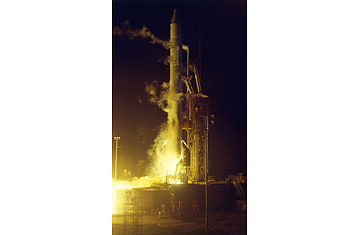
March 3, 1972 and April 5, 1973 — NASA was always less a single government agency than a confederation of local operations, most of which had been in existence as test ranges, missile sites or university labs before the agency even came along. Two of those were Ames Air Force Base in northern California and the Jet Propulsion Laboratory (JPL) in Pasadena — both first-rate institutions and not shy about their rivalry to be the best. JPL had early successes with its unmanned explorations of the moon and the inner solar system, but it was Ames that got out of the box first when it came to exploring the outer planets. In 1972, Ames engineers sent Pioneer 10 on a direct flyby of Jupiter, and the following year, launched Pioneer 11 on a two-planet tour past both Jupiter and Saturn. The ships performed flawlessly, sending back a travelogue of deep solar-system images showing two worlds that were not only remote but colorful — science and eye candy in every shot. NASA got props internationally, but at home back on the West Coast, Ames got bragging rights.